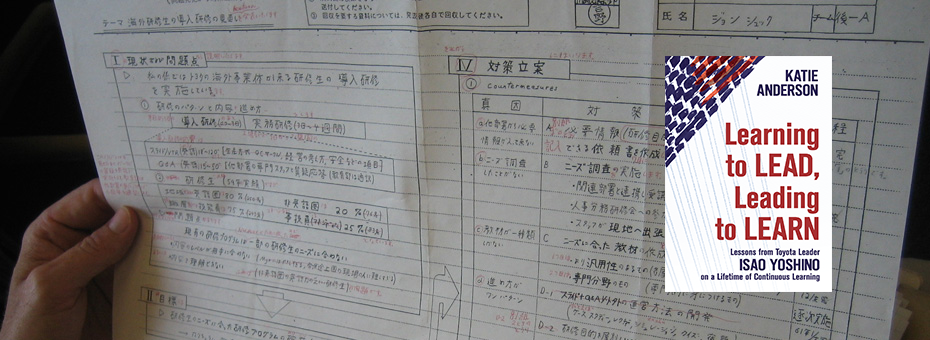Six years ago, I had the great fortune to attend a talk at the Lean Coaching Summit that would eventually lead to my first book, Learning to Lead, Leading to Learn, which comes out next week. This book shares core lessons about leadership and people development—insights that have deeply impacted my life and which I feel privileged to share with a wider audience.
This work began nearly six years ago, at the 2014 Lean Coaching Summit in Long Beach, California, where I attended a talk by John Shook and his first boss from Toyota, Isao Yoshino. They took to the stage to share stories and reflections about working together as manager and subordinate.
One comment that Mr. Yoshino made when reflecting on his role as Shook’s manager, in the mid-1980s as Toyota was preparing to start foreign production, struck me as particularly profound – and was the basis of my very first article for the Lean Post:
My aim as a manager was to develop John by giving him a mission or target, and to support him while he figured out how to achieve the target. And as I was developing John, I was aware that I was developing myself as well.
In this one statement, Mr. Yoshino summed up what I consider to be the essence of people-centered leadership:
- Set the direction
- Provide support
- Develop yourself
Since that time, I reference this quote and framework for leadership in almost any leadership workshop or learning session that I facilitate. It is a powerful construct – simple in concept, but more challenging in practice – for what it means to lead and learn to help your people, yourself, and your organization.
In the following six years since that initial meeting in Long Beach, I have spent thousands of hours with Mr. Yoshino – talking about what it means to be a leader and a lifelong learner. We have explored what it means to learn to lead, and then to lead to learn. Here is a bit more on the three core ideas at the heart of this subject:
Set the direction
Being a leader means clearly defining a challenge or target for your people. The purpose of a challenge is to stretch people to create new possibilities, to strive for bigger outcomes, and to support learning. Mr. Yoshino says that from his experience at Toyota, targets should be framed as challenges – a “seemingly impossible target” – since, as he once stated, “it is the lessons of not reaching your target that make you smarter.”
Also, a clear target gives people direction to orient their actions. Hoshin kanri is one way that Toyota would align targets up and down and across the company. This is the leader’s responsibility.
Provide Support
Being a leader also means helping others learn how to solve problems – how to achieve the targets and challenges set out for them. It doesn’t mean owning the thinking, but it means owning the creation of the conditions for learning and setting up a work environment that is safe and conducive to your people to do their best. This can also be seen as creating the systems that enable their success.
“My role as a leader was to help others develop themselves.” – Isao Yoshino
Develop yourself
Being a leader requires humility to accept that you are not perfect, that you don’t have all the answers, and that you too need to always grow and learn more to improve yourself as a leader and a learner./p>
“It is far better to know that we still have to improve than believe that we know everything already.” – Isao Yoshino
In my new book, Learning to Lead, Leading to Learn: Lessons from Toyota Leader Isao Yoshino on a Lifetime of Continuous Learning, we explore these concepts in depth. I will continue to write on this topic here and beyond, and invite you to share your thoughts, comments, and reflections!






